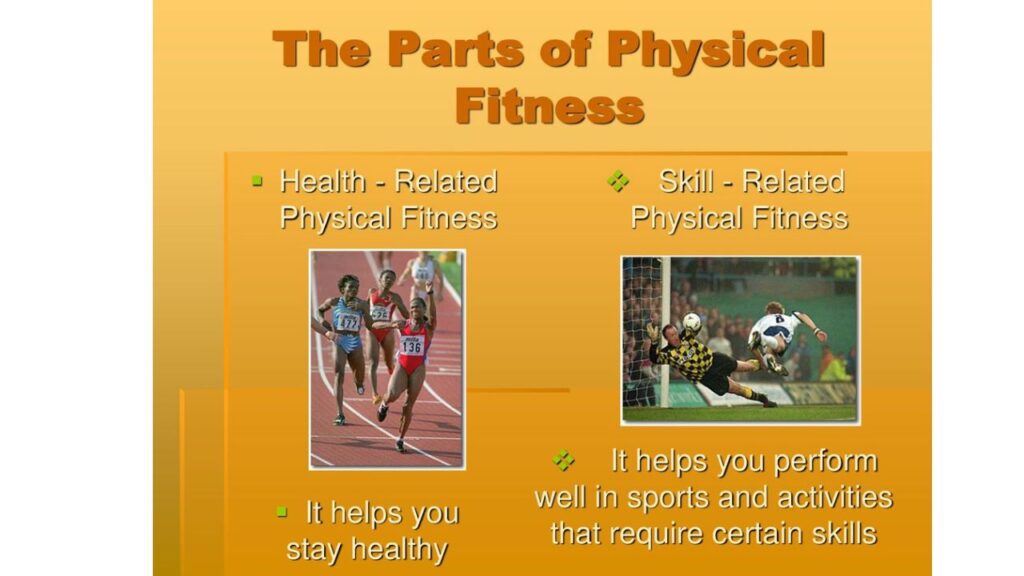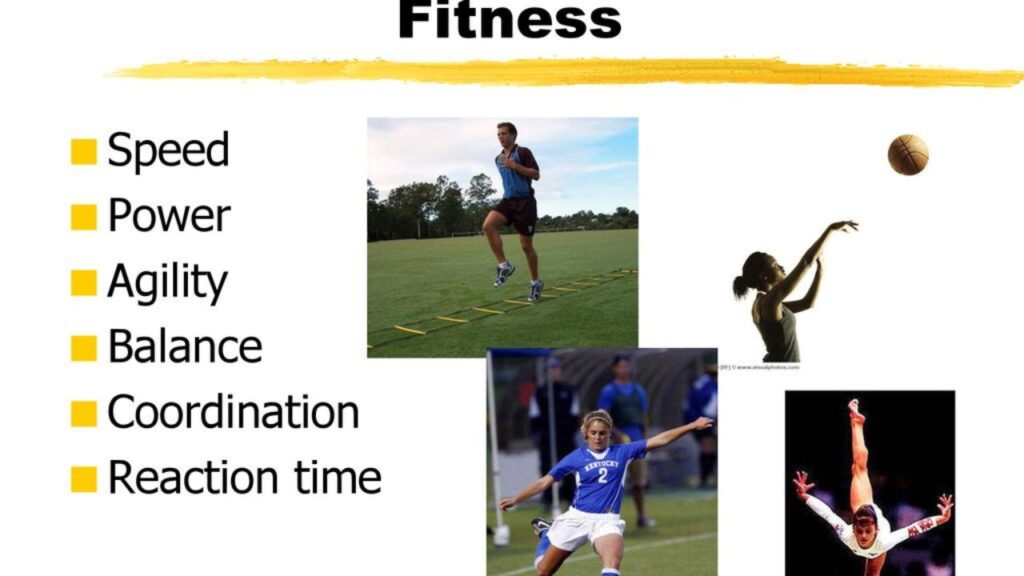“What Is Physical Fitness?” The ability of your body’s systems to cooperate effectively so that you can maintain your health and carry out daily tasks is referred to as physical fitness. Being efficient is putting in the least amount of effort possible when performing daily tasks. A physically fit individual has the capacity to handle homework, take care of household duties, and still have energy left over for recreational sports and other activities.
A physically fit individual can handle everyday tasks like raking leaves at home, stocking shelves at a part-time job, and participating in school band marches. An individual who is physically fit can also react to crises by helping a friend in need or sprinting for assistance.
The Parts of Physical Fitness

There are eleven components to physical fitness: five are skill-related and six are health-related. To achieve peak performance in any kind of physical activity, such as sports, every component matters. But because kinesiology scientists have demonstrated that the six can lower your risk of chronic disease and promote overall wellness, they are referred to as contributing to health-related physical fitness.
Body composition, flexibility, muscular endurance, power, strength, and cardiorespiratory endurance are these components of fitness. They also support your efficient performance in day-to-day tasks.
As the name suggests, physical fitness components related to skills improve your performance in sports and other activities requiring motor skills. For instance, having speed is advantageous in sports like track and field. Though not as strongly as the health-related components, these five aspects of physical fitness are connected to health.
For instance, response time is linked to the risk of car accidents, and balance, agility, and coordination are crucial for preventing falls in older adults, which is a serious health concern. The two features provide a more thorough description of each component of physical fitness: The Five Elements of Skill-Related Fitness and The Six Elements of Health-Related Fitness and Fitness.
Health-Related Physical Fitness

Contemplate a runner. She has good fitness in at least one area of health-related physical fitness because she can run a long distance without getting tired. Does she, however, possess good fitness in all six areas? Although running is a great kind of exercise, it does not ensure total physical fitness for health-related purposes.
You might be more fit in some areas of fitness than others, just like the runner. Each component is explained and illustrated in The Six Parts of Health-Related Fitness feature. Consider your own level of fitness in each area as you read about it.
Fit Fact
Previously categorized as a skill-related component of fitness, power is now considered health-related. Evidence supporting the connection between physical strength and health can be found in an independent Institute of Medicine report. According to the report, having power is linked to better bone health, wellness, a higher quality of life, a lower risk of chronic illness and early death. Power and power-enhancing activities have also been linked to children’s and teenagers’ healthy bones.
How would you rank each of the six components of fitness related to health? To be healthy, you should be able to perform each of the six parts. Fit people are less likely to experience hypokinetic conditions, which include diseases such as colon cancer, high blood pressure, diabetes, osteoporosis, and heart disease. high body fat that are partially brought on by inactivity. Further information on hypokinetic conditions can be found in later chapters of this book.
People who are physically fit also have greater wellness. They have more energy, look better, and feel better. Being physically fit and enjoying good health don’t require being an elite athlete. Anybody’s physical fitness for health can be enhanced by regular exercise.
Skill-Related Physical Fitness

The runner in our example might not score highly in every area of physical fitness related to health, just as she might not score highly in every area related to physical fitness related to skill. Different sports may call for different components of skill-related fitness, even though most sports require multiple components. A skater, for instance, might be agile but still need to improve on their reaction time. Certain people are naturally better at certain things than others. You can enjoy physical activity regardless of your performance on the skill-related components of physical fitness.
Additionally, keep in mind that physical fitness related to skill does not equate to good health. It originates from engaging in activities intended to enhance your physical fitness for health, and both elite athletes and non-athletes can enjoy it.
As previously mentioned, there are two advantages to fitness related to health. It not only keeps you well but enhances your performance in other activities, such as sports. Cardiorespiratory endurance, for instance, benefits you resist heart disease and helps you perform well in sports such as swimming and cross-country running.
Similarly, strength helps you perform well in sports such as football and wrestling, muscular endurance is important in soccer and tennis, flexibility helps in sports such as gymnastics and diving, power helps in track activities such as the discus throw and the long jump, and having a healthy amount of body fat makes your body more efficient in many activities.
FAQ
What is the significance of being in good physical condition?
Physical fitness is characterized as “the capacity to perform daily activities with vitality and alertness, free from excessive fatigue, and with sufficient energy to engage in leisure activities and cope with unexpected emergencies.” An individual’s level of fitness can be assessed through tests designed to measure these qualities.”
How is physical fitness achieved?
In general, a structured recovery plan, adequate rest, moderate-to-intense physical activity, and good nutrition are the keys to achieving physical fitness. Fitness was formerly understood to be the ability to perform daily tasks without experiencing excessive fatigue or sluggishness.
What is the difference between exercise and physical fitness?
Enhancing or maintaining physical fitness is the ultimate or intermediate goal of exercise, which is a subset of physical activity that is repetitive, structured, and planned. A collection of qualities that are either skill- or health-related is called physical fitness.



